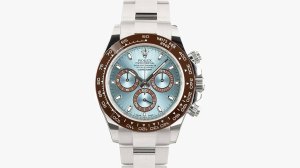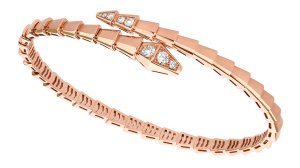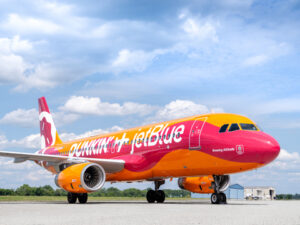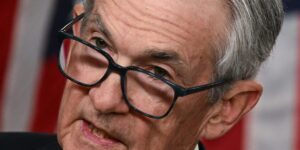In mid-April, Steven Rostovsky, a watch dealer specializing in rare new and pre-owned timepieces, flew from his home in Los Angeles to Miami—not for business, nor, exactly, for pleasure. “The reason I’m here is because I’ve been so stressed since Watches and Wonders and this whole tariffs situation,” Rostovsky tells Robb Report. “I just needed a change of scenery.”
Rostovsky isn’t alone. President Trump announced his “Liberation Day” tariffs on April 2, smack in the middle of Watches and Wonders Geneva, promptly sending the trade into a tailspin. The talk of the fair turned from Rolex’s new Land-Dweller collection to how watchmakers and their American importers would cope with a 31% tariff on most Swiss goods. While that figure was adjusted down to a 10% levy after the Trump administration announced a 90-day “pause” on reciprocal tariffs on April 9, all bets are off for what comes next.
In a white paper on how tariffs would impact the watch market, Tim Stracke, the founder and chairman of Chrono24, argued that the pre-owned market would enjoy a temporary advantage, and then face upward pressure.
Giovanni Prigigallo, cofounder and head of business development and content at EveryWatch, which analyses data on secondary market sales from 683 dealers around the world, crunched the numbers to provide his analysis. In short: “Everything points to a buying frenzy before the pause went into effect and a complete slowdown after.”
Meanwhile, Paul Altieri, founder and CEO of Bob’s Watches, struck a more sanguine note. “Uncertainty always makes people pause, but watches—especially Rolex—are still seen as stable, tangible assets,” he tells Robb Report. “We’ve had more conversations with customers asking smart questions about timing and long-term value.”
We asked five pre-owned dealers, including Rostovsky and Prigigallo, to comment on what this all means for the watch market. You’ll find their remarks below.
A pre-owned Rolex Daytona sold by Bob’s Watches
Tim Stracke, founder and chairman of the board of Chrono24
“Initially, U.S.-based pre-owned inventory will enjoy a pricing edge. But if past disruptions are any indicator—such as the Swiss franc de-pegging from the euro in 2015—price increases in the primary market often translate into higher prices in the pre-owned market as well.
“In the immediate term, I expect a rush of purchases at current prices, as undecided buyers act before increases take effect. Following this, a cooling-off period is likely. Consumers will need time to adjust to the new normal, and some may delay purchases altogether.
“A 10% increase may slow decisions, but it won’t deter the committed. This is especially true for high-end timepieces like a Vacheron Constantin, which tend to be highly price inelastic, whereas entry-level watches are generally more price sensitive and show greater elasticity.”
Paul Altieri, founder and CEO of Bob’s Watches
“There definitely seems to be more urgency from buyers. Some customers are accelerating purchases to get ahead of potential price hikes, especially on gold or high-demand models. It’s not panic, but people are paying attention. Our sales have been robust the past few weeks.
“Pre-owned is already a strong channel, and I think this situation only reinforces its appeal. If new watch prices go up, more buyers will shift to pre-owned for value and availability. Long term, I see this driving more people into the secondary market—especially first-time buyers. But some U.S. retailers who import product from overseas, including watch ADs [authorized dealers], will be impacted for certain. In uncertain times, smart money doesn’t retreat—it accelerates. And nothing outruns a pre-owned Rolex. Not even something Swiss, shiny and new.”
Linden Lazarus, founder of Oliver & Clarke and cofounder of WatchCheck
“The real answer is that nobody has any idea. But whether people buy more watches or less watches, which is essentially how people grade how the market is doing, nobody stops liking watches. People will get their fix somehow. And if brands raise prices significantly, stop shipping as much volume, then people will buy watches elsewhere. The demand piece, I think, will be stationary.
“What I do think, though, is that people will buy watches from the U.S. more than they will buy them from Europe if the tariffs exist in the way in which they were set out in the Rose Garden (it seems like maybe they won’t exist in that way, but it’s very difficult to say). The bigger metric to follow, more than watch prices or watch consumerism, is very standard: consumer confidence.”
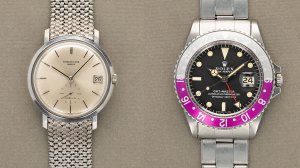
Pre-owned Patek Philippe and Rolex watches sold by Oliver & Clarke
Steven Rostovsky, founder of Rostovsky Watches
“I believe that secondary market prices will rise—my gut feeling is that they will rise 5% but it will take six months to play out. There’s a lot of inventory in the secondary market. But it will change the business. And keep in mind: Tariffs will apply to everything. We were charged a 10% tariff on a Greubel Forsey piece that was coming back from repair.
“I’ve got to do one of two things [when I’m buying pre-owned watches]: Either I can charge 10% more and I’ll buy what I would have bought, or I will pay the customer less for his watch, and they may sell to another dealer. Now you know why I’ve been on vacation.”
Giovanni Prigigallo, cofounder and head of business development and content of EveryWatch
“We looked at the data on pre-owned watch sales globally from the ‘Liberation Day’ tariffs announcement on April 2 and then after April 9, the effective date, which became the pause.
“Let’s start with watches in the 200,000 Swiss francs+ bracket. After the pause, the average price dropped 12% and volume of sales was down 9%. Before the pause, prices were down 4%, but we saw a 21% increase in sales listings. The takeaway: People rushed from the announcement until the effect date to buy these listings and then the market completely slowed down. And prices went down as well. What it signals is that people that spend that much money are more cautious in a period of uncertainty.
“It’s worse for the midrange, or watches prices between 50,000 Swiss francs and 200,000 Swiss francs. We saw a very small fluctuation in price before the pause but a big push in volume. After the pause, we saw a very slight decline in price but a huge decline in volume, minus between 27% and 34%.
“The 20,000-50,000 Swiss franc bracket is very similar. What’s different about watches priced below 20,000 Swiss francs is that before the pause, you had an 8% drop in value (price) and a 34% increase in volume. And then after the pause, you had an 8% increase in price and a 51% drop in volume. Basically, the market took a pause.
“What this is telling me is that the market—meaning sales—saw a frenzy before the tariffs came into effect and that it slowed in the period afterward, as people are trying to figure out how this new 10% tariff is going to work.
“If we break the data down by regions, Europe dropped after the pause, with a minus 59% in sales. Switzerland saw sales go down 63% and prices down 13%. But in Hong Kong and the UAE, prices were pretty stable. Basically, the high-ticket items are all going to Hong Kong because there’s no import/export tax there, so it’s easier to play the tariff game from there. And high-net worth buyers can easily move around.”
Authors
-

Victoria Gomelsky
Victoria Gomelsky is editor-in-chief of the jewelry trade publication JCK and a frequent contributor to the New York Times and Robb Report. Her freelance work has appeared in AFAR, WSJ Magazine, The…
Credit: robbreport.com
